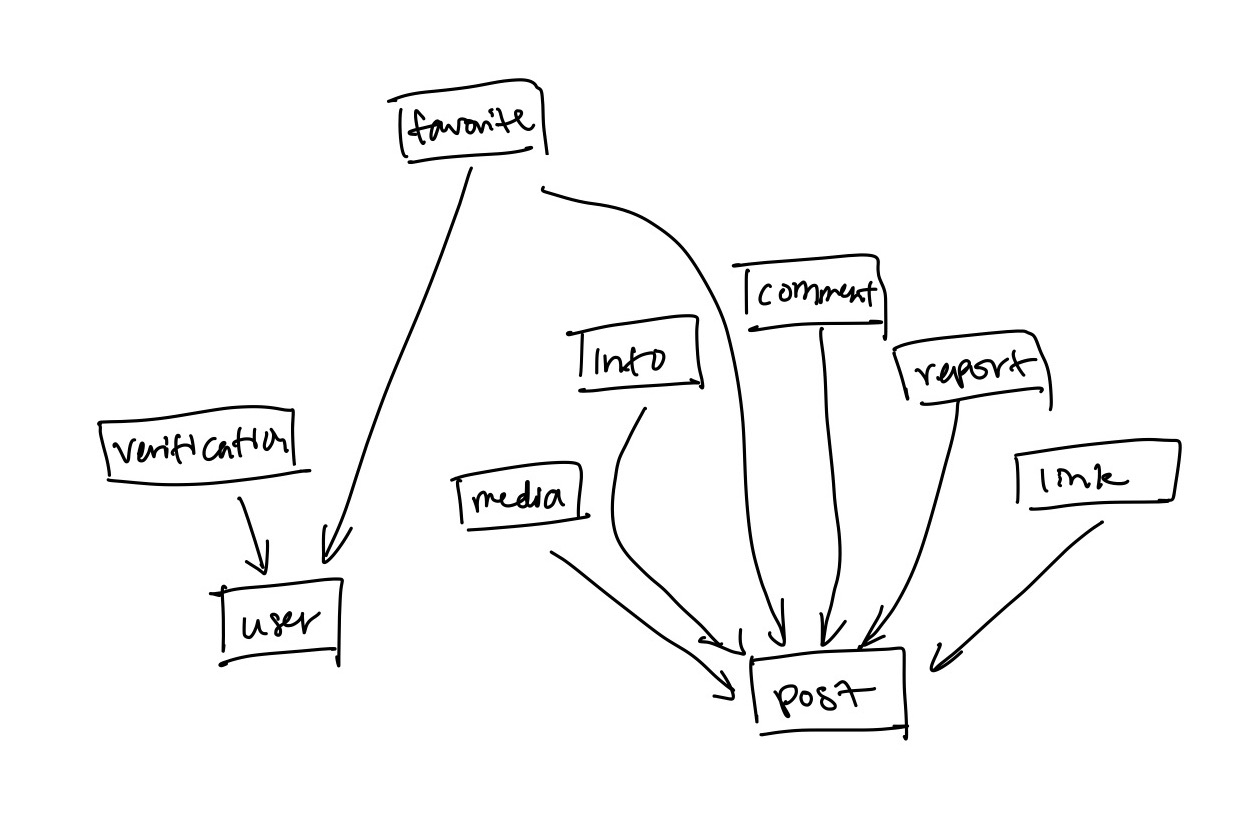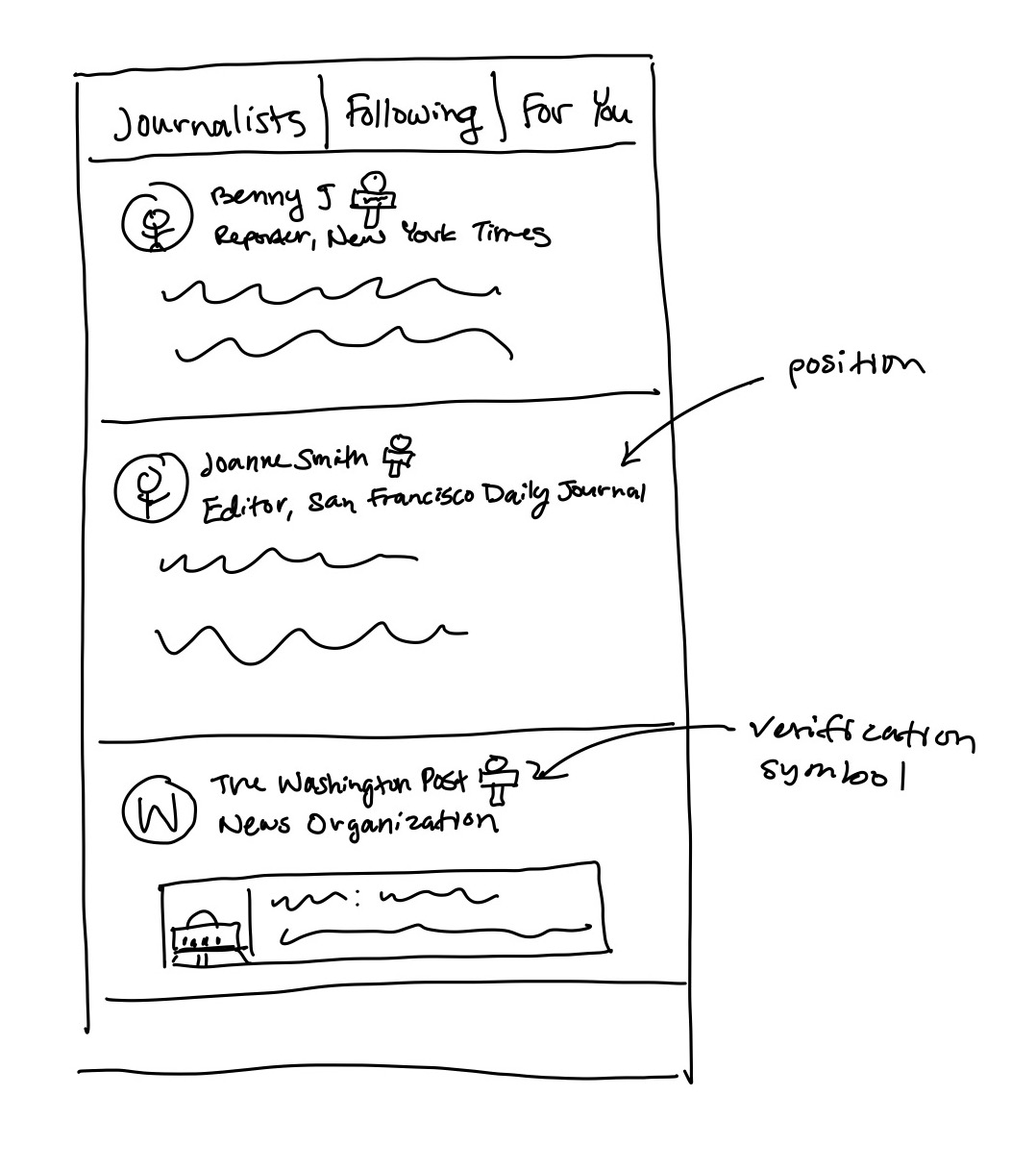Assignment 2: Divergent Design
Goals
Title
Social Info
Audience
A social media targeted toward journalists and those who like to stay informed about the news.
Value
Helps them stay up to date on breaking news and know what is true, fighting the misinformation that is so common on other platforms.
Feature Ideas (collaboratively generated with Rachel Lu)
- Generative AI article summarization
- AI fact checking
- Community Notes
- Special journalist verification
- News tab for verified journalists and news organizations
- Easy citations
- Boost post when added citation
- AI image / deepfake detector
- Karma for good fact checking
- Edits but with visible edit history
- Standardized post tagging with autocomplete to promote better filtering
- Moderation for tag topics
- Minimum time since account creation to post and comment
- More prominent report button
- Tags come attached with info or link to inform and clarify what the tag is about
VSD Analysis
- Generative AI summarization might decrease traffic to the actual article, thereby harming the site that publishes it (a stakeholder). If the app is monetized, then splitting the ad revenue with the site that published the information makes sense
- If there’s a special news tab for verified journalists, how do we decide what journalists and news organizations show up there? There is a question of fairness, because putting them there is like a stamp of approval stating that these sources are trustworthy and they may gain more recognition in the long term. Maybe set a clear standard of accuracy, like 97% of tweets must be factually correct in order to be considered?
- Easy citations might send traffic to the source, thus benefitting them. It also lends legitimacy to the information, which might be an issue if an untrustworthy source is cited (or a rickroll). A special flag for generally untrustworthy sources or a report button would be useful. Improper use of the citation feature can result in a suspension or ban.
- AI / deepfake detector would help people like journalists and people looking for news to know what’s real. However, it could harm people who post genuine media that get falsely flagged, since many people despise AI content. It would be good to make a note on the flag that it’s not 100% accurate, and the judgment can be contested by the poster, after which if the contest succeeds, the flag would become a marker that it's genuine.
- Over a long period of time, if the app becomes widely adopted, it might seriously displace the original news organizations. As Hubbard said, some people go to the news site directly because they don’t trust social media, but a trustworthy social media news site might take away some of that traffic. Sharing proceeds with the news organization would help, and maybe adding outgoing links to articles for the day in a prominent location.
Concepts
User: a way to represent and authenticate an individual user of the app. Once a password is accepted, the user can make a post.
Post: users can share their own content with each other on the app. After writing a post and publishing it, it will appear on other users’ feeds.
Comment: users can reply to posts, fostering interactions. A user might agree with a post, and then comment with their reaction.
Favorite: allows posts to be sorted by popularity. More favorited posts will be more likely to appear, and posts from commonly favorited topics will appear more to that user.
Link: allows users to direct other users to offsite content, including articles. Useful for citing sources or for rickrolling people.
Media: allows for content including images, audio, and videos, which users can attach directly to posts and comments.
Info: an additional bit of info attached to a post but not BY the poster. Can provide context like a summary of an article, or a fact-check.
Report: indicates that content is harmful, to be hidden or removed. A user sees misinformation, they report it to a moderator who removes it.
Verification: includes journalists, celebrities, companies, or other public figures. Marks and emphasizes which accounts are genuine, so users don’t get confused by an impersonator or know who to trust.
Dependence Diagram

Concept Sketches
Info

Verification
